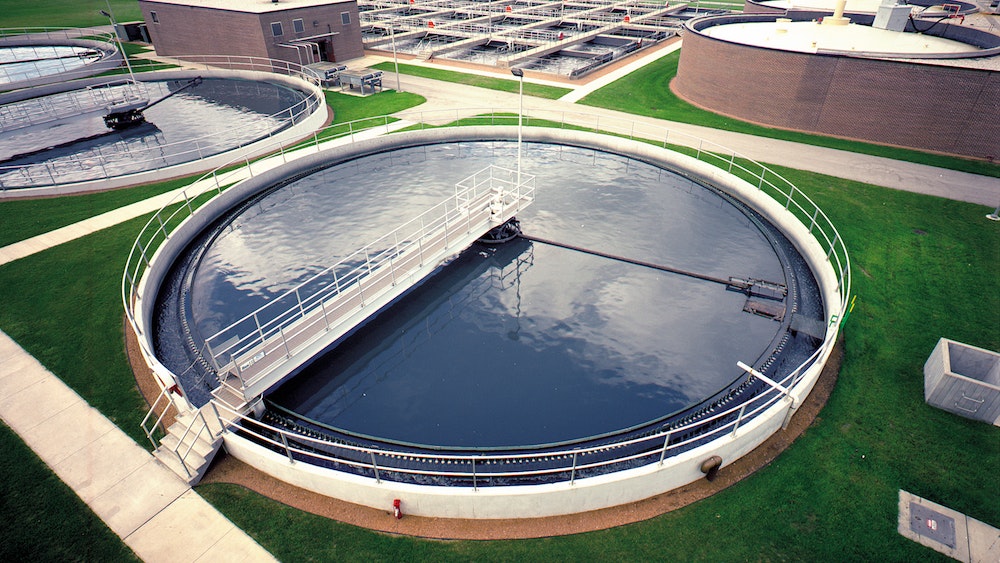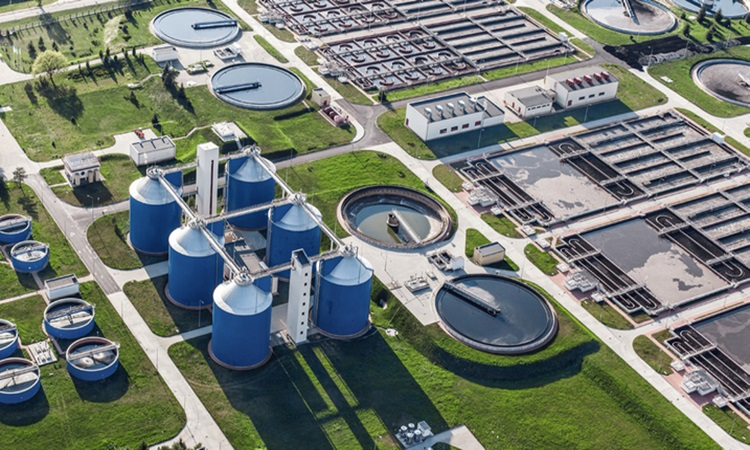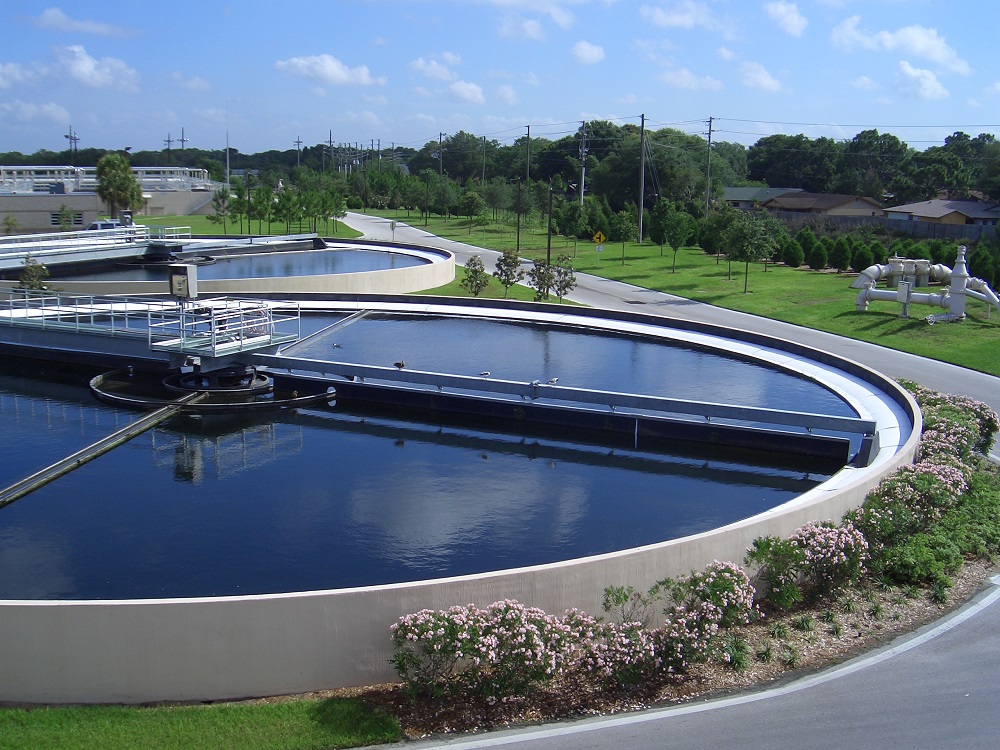Water & Waste Water Plant
Wastewater Treatment
The process of treating wastewater entails removing and getting rid of impurities before turning it into an effluent that can be put back into the water cycle. After being put back into the water cycle, the effluent has a minimal negative effect on the environment or is recycled (water reclamation).[1] A wastewater treatment plant is where the treatment takes place. At the right kind of wastewater treatment plant, a variety of wastewater types are treated. The treatment facility is referred to as a Sewage Treatment for domestic wastewater (also known as municipal wastewater or sewage). Industrial wastewater is either treated separately at an industrial wastewater treatment facility or is treated in a sewage treatment facility (often following some sort of pre-treatment).
Wastewater Treatment Plant Solutions and Equipment Manufacturer
With over 15 years of water treatment experience, whether it be in municipal or industrial wastewater treatment plant systems, Euroteck Environmental is aware of your issues and the requirement to satisfy rising environmental, governmental, and financial demands.
According to a research on India Environment Portal, 630 MLD of the 3,296 MLD of wastewater that runs through the 19 drains that connect to the Yamuna is untreated. Municipalities are under pressure to clean wastewater, and Euroteck Environmental can help by effectively reducing the majority of pollutants with high-quality tools and technologies.
When the national government of India tightens the regulations governing wastewater discharge and many businesses and municipalities struggle to satisfy wastewater emission standards, Euroteck Environmental can employ a variety of solutions to effectively treat water and meet discharge limitations.
What plants are used in wastewater treatment
Many aquatic plants have been employed in the sewage and water cleansing processes. Cattails, totora, water hyacinth, and duckweed are among the plants that are most frequently used.Wetland plants, plants that ward off mosquitoes, and ornamental plants like cattails, bulrush, citronella, canna, hibiscus, fountain grass, flowering herbs, tulsi, and ashwagandha are among them. The high quantities of phosphorus and nitrogen in the sewage water entering the lake are absorbed by the plants.
The biggest facility of its kind in the world is Blue Plains Advanced Wastewater Treatment Plant owned by DC Water. The plant processes close to 300 million gallons of wastewater on an average day and has the capacity to process over 1 billion gallons per day during peak flow.
Water and Wastewater Treatment
Euroteck India is prepared to create water and wastewater treatment applications that meet all of your needs for water and wastewater treatment thanks to our broad range of expertise.
The source of origin, the characteristics of the water, etc. can all have an impact on how water and wastewater are treated. An efficient treatment strategy is created after taking into account all the aspects.
To completely meet the needs of its clients, Euroteck India specialises in designing specialised wastewater treatment applications.Wastewater: Both sewage wastewater and effluent wastewater have been successfully treated by Euroteck India.
Water treatment: Using a variety of methods, our contemporary technology is intended to improve the quality of the water.
Waterbodies (Lakes, Ponds, etc.) Upgrades & Rehabilitation – Euroteck India is committed to sustainable development, hence our team of professionals has created a creative plan to upgrade the water bodies.
Pumping Stations: To distribute, redirect, and stabilise the water flow, we use cutting-edge pumping equipment.
Aquaculture – By introducing natural oxygen into the water, our aeration equipment ensures enhanced water quality and also maintains the equilibrium in the water for the appropriate development of aquaculture.
Through the development of increasingly cutting-edge and future water and wastewater treatment technologies, we continuously aim to broaden the scope of our activity.
Applications
Sewage treatment plants
Raw sewage discharge prevention treatment is a type of wastewater treatment that tries to remove contaminants from sewage to generate an effluent that is appropriate for discharge to the surrounding environment or an intended reuse application. Sewage includes pre-treated industrial effluent as well as wastewater from homes, companies, and possibly other sources.
Our expertise in the field
Many sewage treatment technologies have been created, most of which use biological treatment methods. When selecting an appropriate technology, design engineers and decision-makers must consider the technical and financial factors of each possibility.

Industrial wastewater treatment plants
The procedures used to treat wastewater produced as an unwelcome byproduct by industry are referred to as industrial wastewater treatment. After treatment, the industrial wastewater (or effluent) may be recycled, released into the environment’s surface waters or sanitary sewers, or both.
Our expertise in the field
Wastewater is produced by most industries. Minimising such production or reusing treated wastewater in the manufacturing process have been recent trends. Some firms have had success changing their production procedures to cut back on or completely get rid of pollution.

Agricultural wastewater treatment plants
A farm management agenda for pollution control from restricted animal operations and surface runoff that may be contaminated by chemicals in fertilizer, pesticides, animal slurry, crop residues, or irrigation water includes agricultural wastewater treatment. Continuous confined animal operations like the production of milk and eggs necessitate the treatment of agricultural wastewater.
Our expertise in the field
Sediment runoff, nutrient runoff, and pesticides are examples of nonpoint sources of pollution. Animal wastes, silage liquor, waste from milking parlours (dairy farming), abattoir waste and other point sources of pollution


Instruments Used in Industrial Wastewater Treatment
In today’s production process, water is essential. Water is required to convert raw materials such as metals, woods, and plastics into fundamental manufacturing resources on a basic level. When these resources arrive at production plants, water is utilised to clean, mix, and turn them into the things we use every day.
Instruments for measuring levels. These instruments, as their name implies, are employed in wastewater treatment systems to maintain specific liquid or gas levels in pipes, tanks, or silos. …
Flow Instruments are a type of instrument that is used to measure the amount of water in
- Instruments for measuring pressure…
- Instruments for measuring water quality.
Need a Consultation? Contact Us 24/7
Innovative Test & Measurement Solutions for Market Leadership




